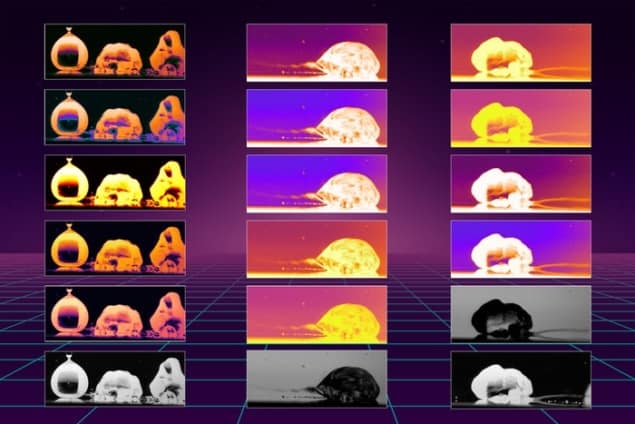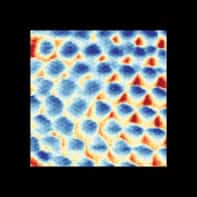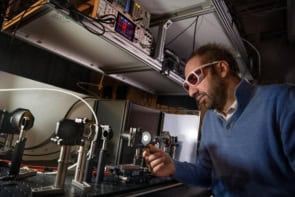
A mechanism that causes droplets of boiling water to propel themselves rapidly across hot oil films has been identified by Victor Leon and Kripa Varanasi at the Massachusetts Institute of Technology. The duo used high-speed photography to determine the relationship between the fleeting timescales of bubble formation inside the droplet, and their motions over long timescales.
When water droplet is placed on a hot metal surface it will boil and create a cushion of vapour upon which the droplet will “float”. This well-known phenomenon is called the Leidenfrost effect, and the low friction created by the cushion allows droplets to move at speeds of millimetres per second over hot surfaces.
If instead, the surface is coated in a film of hot oil, it may seem intuitive that a droplet placed on top of it would experience far more friction. Yet when doing just that in a new experiment, Leon and Varanasi observed the exact opposite effect: with droplets moving up to 100 times faster than levitating Leidenfrost droplets. To investigate this strange effect, they used high-speed photography — at 100,000 frames per second — to investigate the mechanisms propelling the droplets.
Trapped bubbles
In their images, the duo identified bubbles of vapour forming at the droplet-oil interface on microsecond timescales, each some distance away from the centre of the droplet. In a Leidenfrost droplet, these bubbles would escape almost immediately – and since they are random, would emerge almost uniformly across the base of the droplet.
In contrast, the oil interface prevents vapour from escaping in this case. As a result, bubbles accumulate inside the droplet, allowing asymmetries to develop over time. Since this vapour is far more insulating than the liquid inside the droplet, it produces thermal disturbances in the oil film. This causes the droplet to vibrate – reducing its friction, while also encouraging additional bubble formation.
Momentum transfer
When the bubbles finally burst through the droplet surface, Leon and Varanasi determined that they transfer momentum to one side of the droplet, propelling it in one direction. Altogether, this process produces a coupling between random, microsecond-scale fluctuations inside a droplet, and its motion over far longer timescales.

Self-propulsion of inverse Leidenfrost droplets explained by physicists
When analysing their results using established equations of fluid mechanics, the duo found that their motions were remarkably similar to those of droplets moving across the surfaces of infinitely deep pools of oil – despite the films they used being no more than 100 micron thick. This would greatly reduce the friction experienced by the droplet, allowing it to skim rapidly across the surface.
Through their future research, the duo hopes that the effect could be harnessed to trigger droplet propulsion in controlled directions. If achieved, this could allow for advanced microfluidic devices, which could smartly propel fluids in specific direction. Such devices could include pumps that can operate in microgravity environments; and new breakthroughs in applications such as targeted drug delivery.
The research is described in Physical Review Letters.



